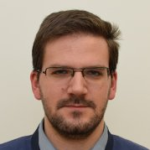
Research
Budapest University of Technology and Economics
Faculty of Electrical Engineering and Informatics
Solid-state lighting systems
IVL LED karakterisztikák • LED élettartam • LED megbízhatóság • LED mérés • LED öregedés • Lighting 4.0 • multi-domain modellezés

A kutatócsoport tagjai:

Poppe András
full professor

Pohl László
associate professor

Farkas Gábor
honorary associate professor

Hantos Gusztáv
assistant lecturer

Hegedüs János
assistant research fellow

Kohári Zsolt
assistant research fellow

Németh Márton
research fellow

Horváth Péter
assistant professor
Activity of the research group:
Multi-domain (combined electrical, optical and thermal) measurement, modelling and simulation of LED luminaires, OLED devices, CoB LEDs, including LED ageing studies. Research for Lighting 4.0.Recent results:
Together with members of the Delphi4LED consortium led by Signify, we have developed an Industry 4.0-like workflow for the fully computerised design of LED luminaires, essentially eliminating the need for physical prototyping of luminaires. The workflow is based on multi-domain digital twins of LEDs and LED modules, which are used to create virtual prototypes of LED luminaires for a given application scenario. Using these, computer simulations can be used to define the key operating parameters, eliminating the need for physical prototyping of the luminaires.- The digital twins of LEDs (or more precisely LED packages) are based on the so-called wafer-level multi-domain LED model developed by us. This model has been further developed in several steps.
- We have developed a method to develop a system-level model of LED luminaires.
- We have developed a method for a constant total luminous flux control scheme for LED luminaires. This can save up to 3-5% of the electricity consumed by street lighting.
- We have developed a new theory to describe the aging process of LEDs using standard LM-80 measurements.
- A theoretical model for constant luminous flux control compensating for both temperature variation and ageing effects has been developed. Nearly 14% of the electricity consumed during the lifetime of the L90 can be saved and the lifetime can be extended by nearly 30%.
- We have developed a multi-domain model of an LED type describing ageing. With such a model, Industry 4.0 design work can be significantly accelerated and the resources required can be greatly reduced.
- Complex in-situ test methods have been developed to determine the operational performance parameters of LEDs. The method can be used to detect, among other things, problems resulting from faulty thermal design.





